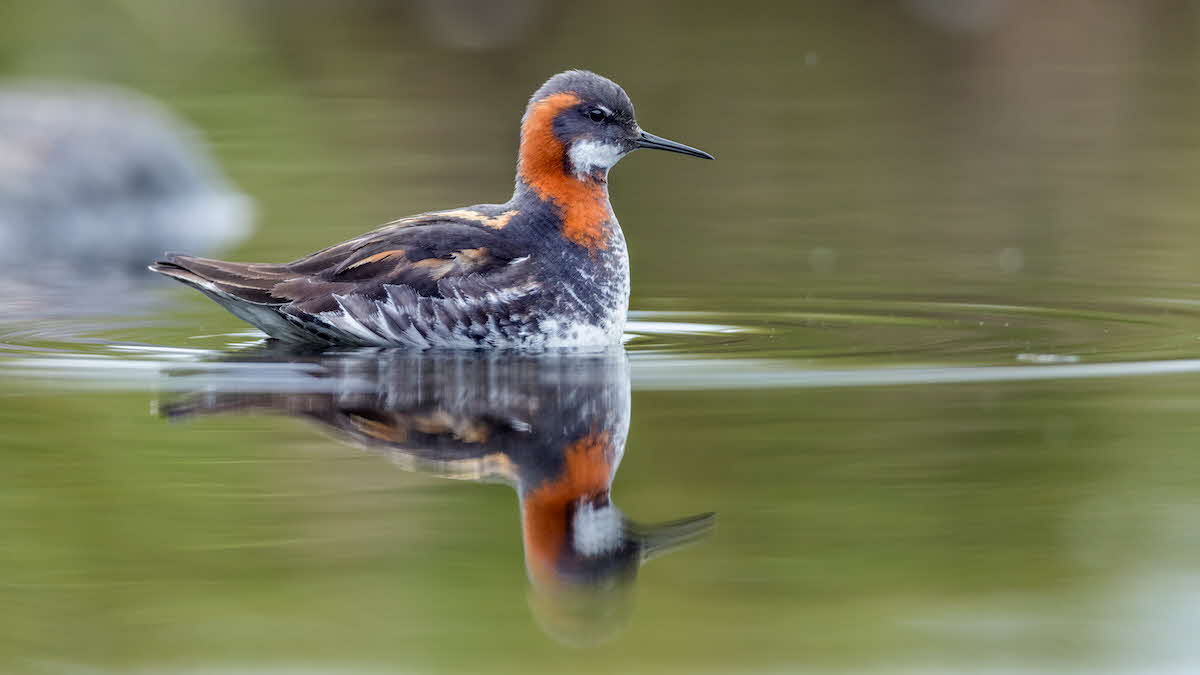Top sites for nature
Land yourself among Britain's best nature spots.
Discover Britain's wildlifeDavid Chapman introduces a small bird that makes long journeys and defies gender stereotypes
 The red-necked phalarope is a small bird with a wingspan of about 32cm
The red-necked phalarope is a small bird with a wingspan of about 32cmThe ‘red-necked phalarope’ – now there’s a name! The word ‘phalarope’ has a wonderfully mysterious feel to it and, true to form, this is an enigmatic bird which breaks conventions.
Globally, there are three types of phalarope: the red-necked, Wilson’s and the grey. Of these, only the red-necked breeds in the UK. The other two occur as migrants, usually in the autumn. All three share a few features which tie them together as a family.
Phalaropes are small wading birds that spend some time on land in the summer. However, unusually, they live predominantly on water, where they are noted for spinning in tight circles. This motion creates a vortex that brings their prey – such as aquatic insects and plankton – to the surface, where it can be picked off.
Because they spend time both in and out of the water, phalaropes have evolved lobed feet, and it is this trait that gives them their name. Phalaropus (the scientific name) is derived from the Ancient Greek words ‘phalaris’ for coot and ‘pous’ for foot: the phalarope is literally ‘coot-footed’.
Like many other bird species, red-necked phalaropes show sexual dimorphism. In other words, their significant differences in size and/or plumage make it possible for us to distinguish between the two sexes. Generally where birds are concerned, the male is often the more colourful of the two sexes, but female red-necked phalaropes reverse this trend. The reason for this is logical but quite surprising.
In phalaropes there is a role reversal between the sexes. The females display and compete with each other to attract a mate – in fact, a female will do her best to pair up with more than one male, laying eggs in a number of nests to increase her chances of passing on her genes to the next generation. The term for this is polyandry (the term means ‘many men’ in Ancient Greek). Conversely, the males are thought to be monogamous, remaining faithful to just one female.
Both sexes are involved in selecting a suitable nest site – a simple depression in marshy vegetation – but it is the male who adds the grass to it before the female lays her eggs. The male then incubates and raises the chicks. Once the eggs are laid the female will spend time protecting her mate from other females.
 The female red-necked phalarope is more colourful than the male
The female red-necked phalarope is more colourful than the maleRed-necked phalaropes breed in the far north – Iceland, Greenland, Russia and Scandinavia, for example – but they can also be found in the northernmost parts of Britain (the British Trust for Ornithology estimates a population of 64 breeding males). May to July is the best time to observe them, with two of the best places for spotting being RSPB nature reserves: the hide at Mires of Funzie (Fetlar, Shetland); and Loch na Muilne (Lewis, Outer Hebrides).
When it comes to winter migration, the females leave a little earlier than the males, who stay to rear the youngsters. Most European red-necked phalaropes head south to the Arabian Sea, but recent research has shown that our phalaropes undertake a far more astonishing journey. They head west across the Atlantic, joining birds from Iceland and Greenland in a migration which takes them first along the east coast of North America, across the Gulf of Mexico and then to the Pacific Ocean, off the west coast of Central America. The total distance of over 10,000km (about 6,000 miles) is achieved with an average of four stopovers.
This distance seems all the more incredible given the red-necked phalarope is a very small bird with a wingspan of about 32cm (the same as a skylark). Perfectly formed, the red-necked phalarope is a dainty delight with a slender bill and beautiful plumage. The females have a striking red-ochre pattern on the breast and neck, forming a colourful collar around a white throat patch. The rest of their plumage is dominated by a stylish steel grey that is decorated with golden stripes on the wings. The hard-working males don’t need to be as colourful as the females, but their patterning is similar.
As the breeding season ends and they begin their migration, both male and female phalaropes moult into a less colourful plumage. Neither the eastern European nor the British-bred red-necked phalaropes typically migrate along the coasts of Britain; nonetheless they are occasionally found on coasts and lakes around the UK, especially after stormy weather in autumn.
So, there you have it. A small bird with a big story. Isn’t wildlife amazing?
Every month I will show you a photo of something from the natural world. It might be a close-up, or of a subject that is difficult to identify. All you have to do is figure out what it is! Here is this month’s photo; no clues or prizes – it’s just for fun. (I will give you the answer next month, but if you can’t wait, see the Digital Magazine.)

The subject of June’s mystery photo was: a barn owl